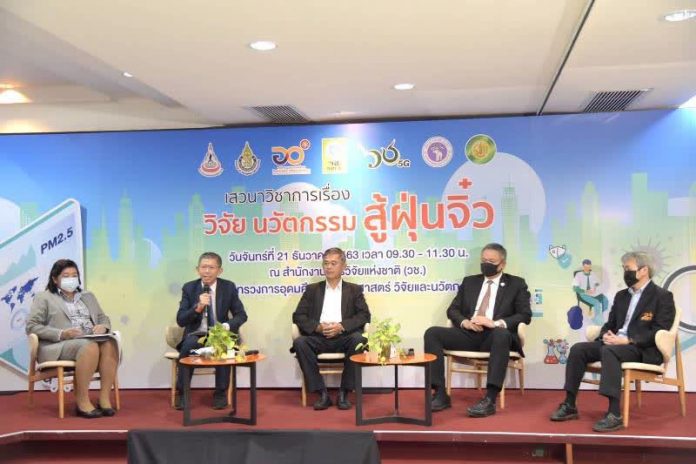BANGKOK (NNT) – Environmental academics have brainstormed their ideas in a seminar on how to mitigate the air pollution disaster in Bangkok, with a limit on the number of cars on the road considered essential to help reduce the high PM 2.5 airborne particles emitted from traffic in Bangkok.
The National Research Council of Thailand (NRCT) had organized a seminar on research and innovation addressing airborne particle accumulation.
Kasetsat University’s Dean of the Faculty of the Environment, Surat Bualert said today that Thai authorities have lacked the power to limit vehicle numbers on the roads or the promotion of non-emitting vehicles, as measures to curb the air pollution disaster.
He said this has left emissions from road traffic, which is the biggest contributor of airborne particulate matter unchanged, while urging related agencies to work more collectively and systematically for an effective unified approach.
On the haze and emissions from forest fires, a research project director from Chiang Mai University, Mr Sermkiat Jomjunyong said today that air pollution from forest fires and haze has a root cause in economic and societal conditions, resulting in more forest fires than the past.
He recommended that authorities put more money into finding a long-term solution to this issue, which includes addressing villagers’ occupational land, housing, and the regulation of an accepted timeframe for proscribed burning. Thai authorities will also need to cooperate with neighboring countries to solve the issue.
The NRCT’s Acting Director General Wiparat De-ong said the council wishes to see real-life implementation of research and innovation to help reduce the emission of airborne particles from each sector.
The NRCT has been working with universities across the country to support research, while prioritizing innovations on air quality measurement. These innovations can help provide the government with decision making information, such as the installation of small-sized Dust Boy monitors at 200 locations across the country to provide real-time information on the amount of particle accumulation in the air.



